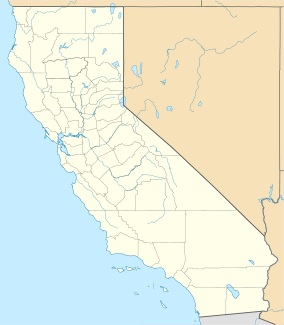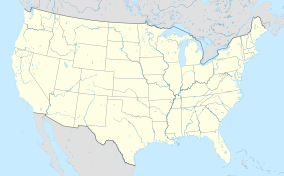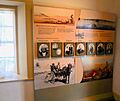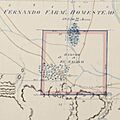Los Encinos State Historic Park facts for kids
Quick facts for kids Los Encinos State Historic Park |
|
|---|---|
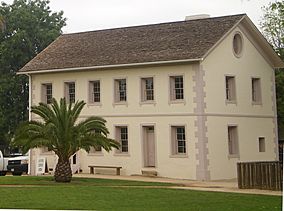
Garnier Building, 2008
|
|
| Location | Los Angeles County, California, United States |
| Nearest city | Encino, Los Angeles |
| Area | 4.7 acres (1.9 ha) |
| Established | 1949 |
| Governing body | California Department of Parks and Recreation |
| Reference #: | 689 |
Los Encinos State Historic Park is a special state park in California. It protects old buildings from a historic ranch called Rancho Los Encinos. You can find this park in Encino, California, which is part of the San Fernando Valley.
The park covers about 4.7 acres (1.9 hectares). It has several interesting features. These include the original nine-room de la Ossa Adobe house. There's also a two-story limestone building called the Garnier building. You can see a blacksmith shop, a natural spring, and a pond. This important site became a California state park in 1949.
Contents
A Look Back: The Park's History
For thousands of years, a natural spring here provided water. This spring was important for the ancient village of Siutcanga. This village was home to the Tongva people. The name syútkanga means "place of the oak" in their language. This is why the Spanish later called it Los Encinos, meaning "the oaks."
In 1769, a Spanish group called the Portola expedition explored this area. They wrote about the village. They named the whole San Fernando Valley "The Valley of St. Catherine of Bononia of the Oaks."
The land was an important stop between Los Angeles and Santa Barbara. Many different people owned the property from the 1840s to the early 1900s. Today, the park shows what life was like for these owners. This includes Mission Indian, Californio, French, and French Basque families. They all ran farms and businesses here.
The Amazing Springs
The Encino Springs are historic natural springs. They were the heart of the Siutcanga village of the Tongva-Kizh people. Later, these springs supplied water for Rancho Los Encinos. This area is now part of the San Fernando Valley in Los Angeles County, California.
A traveler named Juan Crespí wrote about the springs in his diary in 1769. In 1845, soldiers even camped at the Encino Springs. This was before a battle nearby. Around 1872, Eugene Garnier built reservoirs for the springs.
In 1875, people described the main ranch spring. It filled a stone reservoir and a bathing pool. It produced about 5 gallons (19 liters) of water every minute. By 1890, there were "a number" of springs in the area. The water from these springs was bubbly, like soda water. It also smelled a bit like rotten eggs because of hydrogen sulphide. The water came out warm, between 83 and 90 degrees Fahrenheit (28-32 degrees Celsius).
By 1915, two main springs were known. The smaller one was west of the larger one. It was enclosed in a small stone reservoir. A government geologist said the water came from a layer of rock called Miocene shale. Even in 1969, the springs still produced 24,000 gallons (90,850 liters) of water daily. They were still flowing at Los Encinos State Historic Park in 1978.
In 1925, a grinding stone was found near the springs. It looked like an old tool used by Native Americans. An archeologist said that the local Native Americans made very fine stone tools. There was even an Encino Hot Springs resort in the 1920s.
California Historical Landmark
Los Encinos State Historic Park is a California Historical Landmark. Its marker, NO. 689, tells us:
- The Franciscan padres used Encino as their base. They explored the valley before building Mission San Fernando in 1797.
- In 1849, Vincente de la Osa built a nine-room adobe house.
- Eugene Garnier bought the ranch next. He built the two-story limestone house in 1872.
- In December 1891, Domingo Amestoy became the owner of the property.
Images for kids
More to Explore
- List of California state parks
- Ranchos of Los Angeles County


